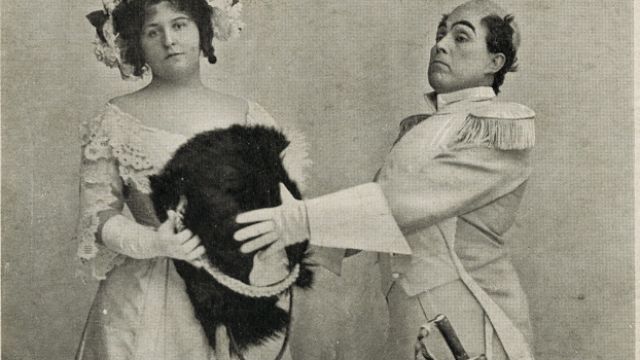Popular Comedian’s Tragic Finale
The masks of comedy and tragedy are often entwined to represent the two faces of theatre. So too does the stage comedian often hide a tragic face.
In the late 19th and early 20th centuries, Englishman George Lauri was Australia's foremost musical comedian. For over 16 years he delighted Australian audiences with a series of superb and unique comic performances, yet behind the laughing stage performer was a troubled man.
George was born to a theatrical family of London. He made his debut on stage at the request of his father at an early age. By the time he was 21, he was working at the Britannia Theatre at Hoxton in England and shortly thereafter married a beautiful soubrette called Marietta Nash.
George worked in America and England in bit parts but it was not until he came to Australia that he became a star. His arrival was at the request of J. C. Williamson, who was looking for a comic for Australia's premier theatrical company, The Royal Comic Opera Company. Soon George, Marietta and their son George junior were on their way to Melbourne and stardom.
George first appeared in Australia in 1891 in The Merry Monarch at the Princess Theatre. He was immediately at home on stage with such luminaries of the Australian theatre as Florence Young and Howard Vernon. Soon afterwards he was permanently wedded to the demanding schedule of the Royal Comics.
At that stage the company’s schedule involved monthly runs of demanding light operas and musical comedies. Whilst one show was being played another was being rehearsed. It was a constant grinding schedule of work and travel, which took them all over Australasia.
By 1900, George had played in several Gilbert and Sullivan operettas such as The Gondoliers and Iolanthe. He had also played in contemporary light operas such as La Mascotte, The Gay Parisienne, Marjorie and many more. George always took the comic roles; his elastic features, impish grin and sprightly dancing made him a firm favorite with Australian audiences.
However George did not like the role, 'when a man stage jokes successfully he is,’ he said, ‘generally speaking the only one who does not enjoy it. In my case I positively suffer and have done so for years.'
George, like many comics suffered from depression, yet in the early 20th Century it was diagnosed as 'softening of the brain.' In 1907 he suffered a breakdown in New Zealand and had his first hiatus from the stage since his arrival in Australia. Yet he was addicted to fame and returned later that year, only to be forced off again by ill health.
In 1908, the Australian theatrical community staged a benefit for George and Marietta. It was generally thought that George would never again appear on the Australian stage. Tragically that came true in an unexpected way.
In January 1909 George and Marietta were holidaying on Sydney's northern beaches. Marietta was inside cleaning whilst George sat on the balcony overlooking the sea. Suddenly Marietta heard a cry, a gasp, she ran outside to find George bleeding from the throat, a straight razor on the ground beside him.
George mumbled, 'I have done it. I am tired of life.'
A doctor was called but 48-year-old George Lauri was gone.
Leann Richards
Image - Clara Clifton and George Lauri in Veronique (Talma and Co)
Visit Leann's blog www.hat-archive.blogspot.com/




